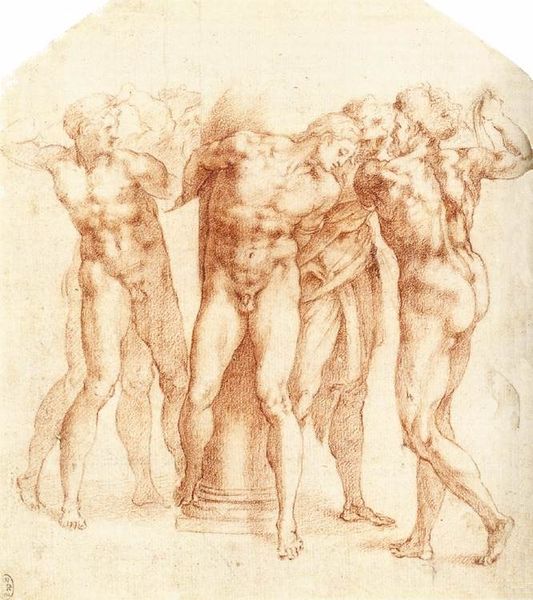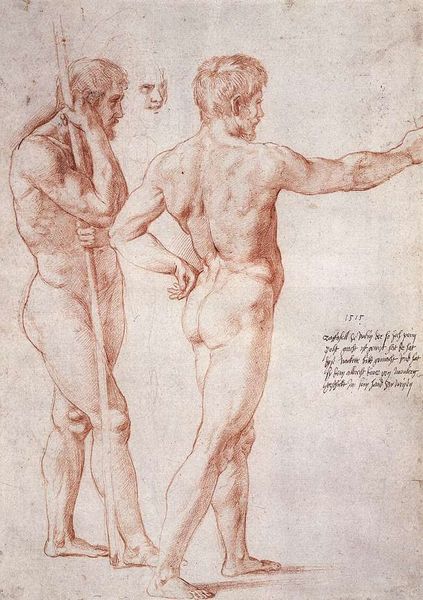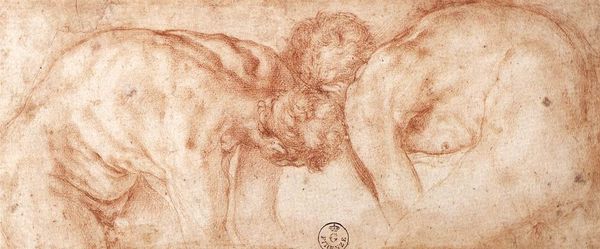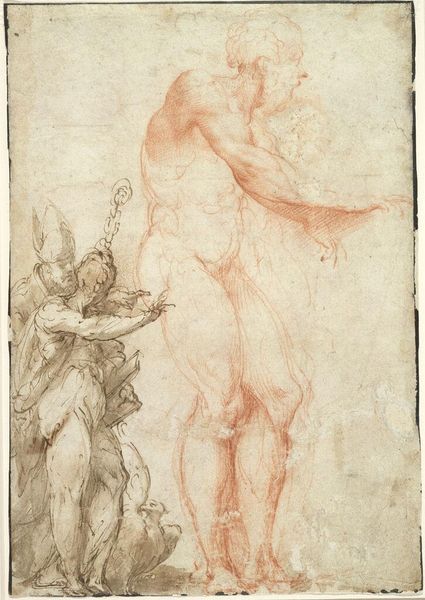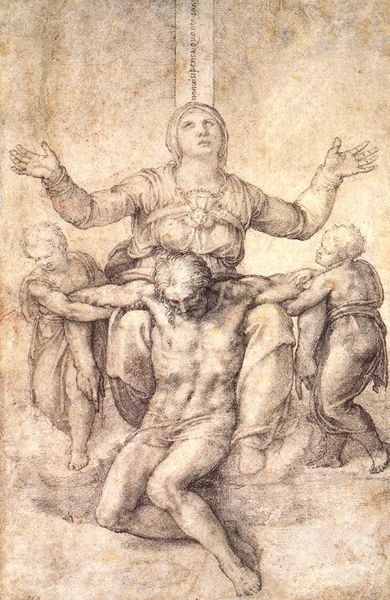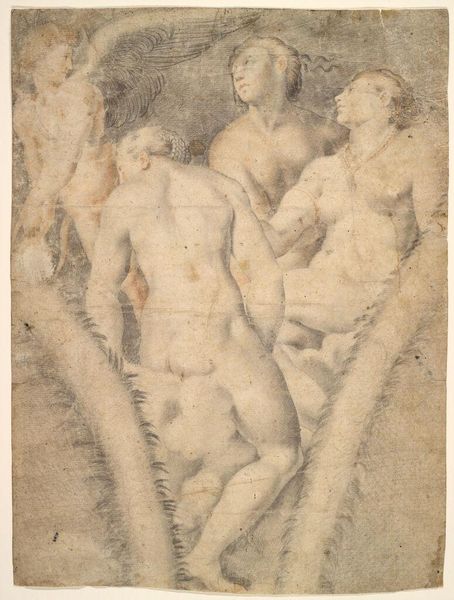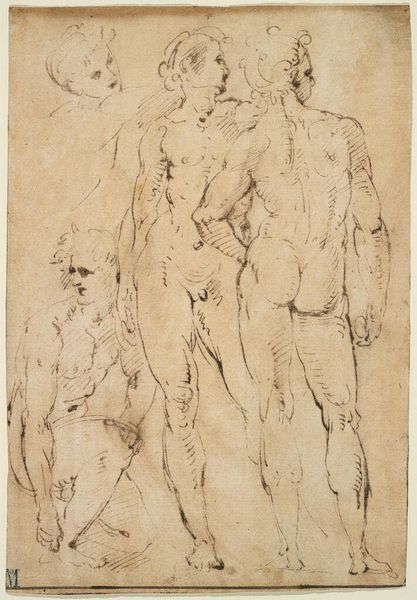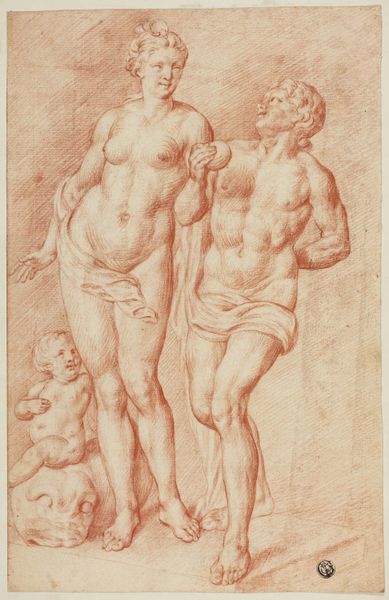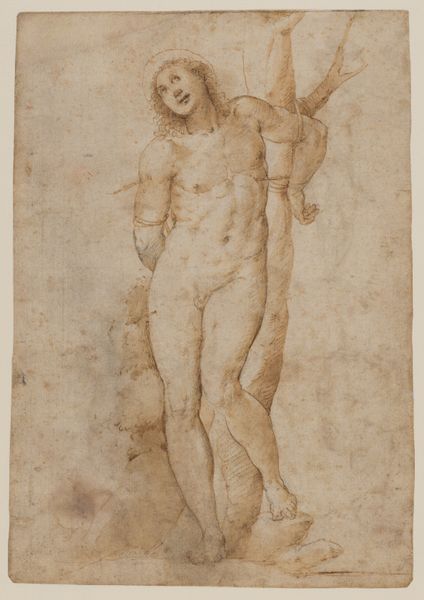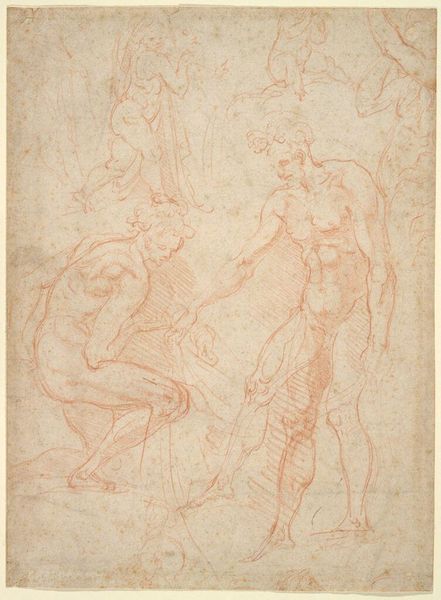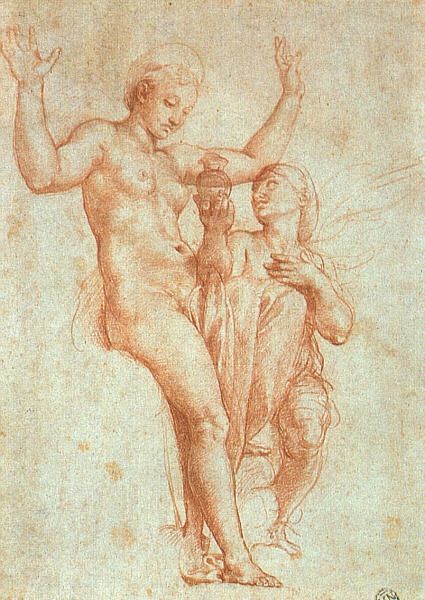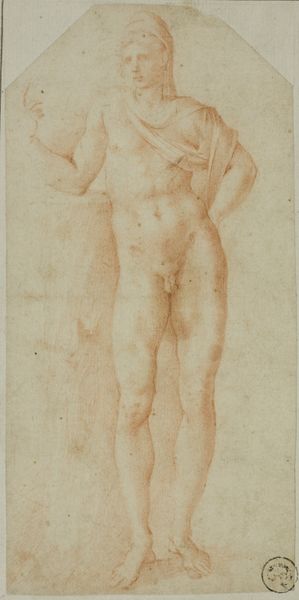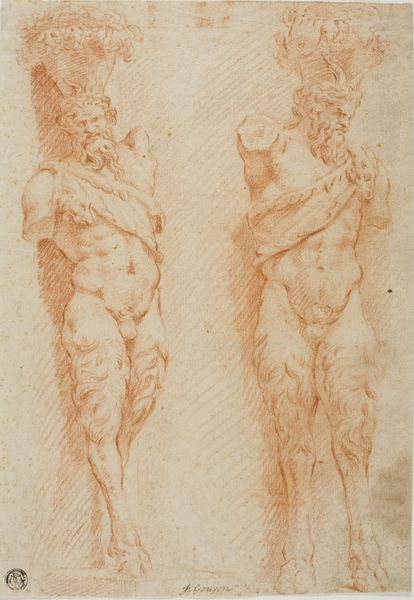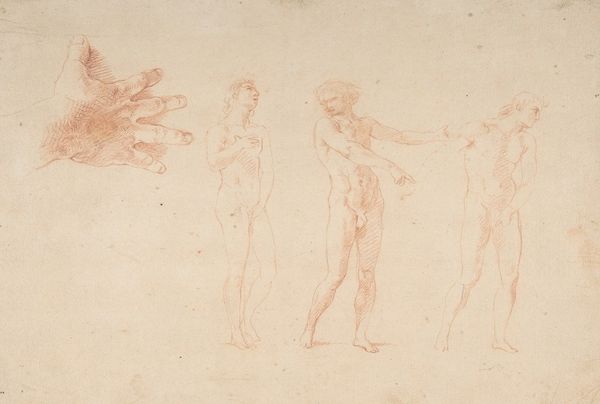
drawing, paper, ink, pencil, charcoal
#
drawing
#
pencil sketch
#
charcoal drawing
#
mannerism
#
figuration
#
paper
#
charcoal art
#
oil painting
#
female-nude
#
ink
#
pencil
#
charcoal
#
history-painting
#
nude
Dimensions: 49.5 x 21.3 cm
Copyright: Public domain
Editor: This drawing, "The Three Graces" by Jacopo Pontormo, created around 1535, showcases the artist’s masterful use of, it appears, red chalk or perhaps sanguine on paper. It’s currently housed in the Uffizi Gallery. The ethereal quality of the figures, combined with the rawness of the sketch, really captures my attention. What do you see when you look at this piece? Curator: Beyond the immediate aesthetics, I’m drawn to the materiality of this work. The red chalk itself speaks of process. It wasn't just a means to an end; it defined the character. Think of the procurement of these materials: who made the chalk? What labor extracted the pigment from the earth, processed it, and formed it into a tool for Pontormo? And consider the paper - its making, its cost, its status. Editor: That's fascinating! I never really considered the production chain of the materials themselves. Curator: Precisely! The 'high art' image before us relies entirely on those 'lower' or perhaps less visible processes. It also begs questions of social context. Consider the patronage system. This drawing, likely a preparatory sketch, speaks to the commission, the demands of the patron, and Pontormo's place in the societal hierarchy. Editor: So, it’s not just about artistic skill, but also about labor, class, and even economic systems intertwined in a seemingly simple sketch? Curator: Exactly. The delicate lines conceal a complex web of social relations and material processes that brought it into being. Think about the role the Uffizi plays in all of that, the continued commodification and valorization of both the artist and materials. Editor: I never would have considered how the simple act of drawing involves a broader range of processes! Thanks for the explanation! Curator: And thank you for prompting this reflection! It reminds us that art is never created in a vacuum, and interrogating the "stuff" of art is a radical way to explore history.
Comments
No comments
Be the first to comment and join the conversation on the ultimate creative platform.
